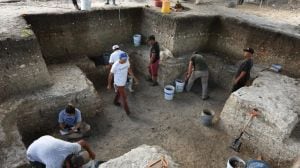This doctor knew India’s AIDS numbers were highly inflated
His survey in Andhra’s Guntur convinced Lalit Dandona there were less than 3.5 mn cases in India. Now, Govt revises number from 5.7 mn to 2.47 mn

It became official last week that India’s AIDS scare was exaggerated far above the actual infection number of 2.47 million. But before that, when the country’s estimate of infected people neared 6 million, there was one man who knew government surveys were getting it wrong.
Dr Lalit Dandona, a public health specialist and now professor of international public health at University of Sydney, had first indicated in a paper presented at an AIDS conference in Canada that India could be overestimating its HIV/AIDS figures because of the estimation method used.
Investigators from his team collected blood samples from 12,617 people aged between 15 and 49 in Andhra Pradesh’s Guntur — one of the worst affected areas in the state — to come to their conclusions. Their method estimated that there were 45,900 people living with HIV in Guntur, less than a half of the official number, 112,600.
He extrapolated the findings from Guntur to say that there may be between 3.2 million and 3.5 million adults with the infection in the entire country, much closer to the official figures released last Friday.
“It’s good to see corroboration of what we had suggested a year ago,” Dandona told the The Indian Express from Sydney. “I had looked at my data again and again and checked it many times over before I went to the world with it.”
Unlike the individual samples that Dandona’s team collected, the official “sentinal surveillance” method used data from ante-natal clinics, sexually transmitted infection clinics and public hospitals. The government’s estimates were inflated because the clinics are used by the segment of society in which HIV is most prevalent, said Dandona, who got his medical degree from AIIMS in New Delhi and a public health degree from Johns Hopkins University in US.
At that time, though his study was widely acknowledged, officials expressed caution at arriving at an all-India figure based on Dandona’s work. But unofficially, they were convinced.
He gave a presentation to National Aids Control Organisation on his methodology. By then, the National Family Health Survey Data had already been collected and were indicating the same trend as suggested by him.
He said fears that reduced numbers would mean less funds for HIV are baseless. “It is unlikely that the money for HIV will dry up. After all, two and a half million is not a small number.” Dandona said he is interested in developing a systematic evidence-base for effective health systems. “There has to be strong science behind how diseases are assessed and interventions are planned. And then assessing how they do once implemented,” he told Express.





- 01
- 02
- 03
- 04
- 05


























